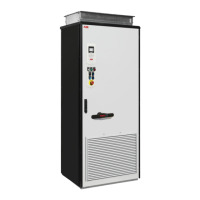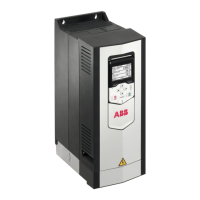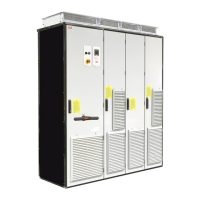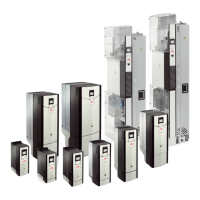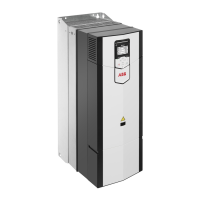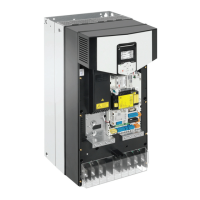Implementing the control of a contactor between drive and
motor
Implementing the control of the output contactor depends on the motor control mode and
stopping method selected.
When you select the DTC motor control mode and the motor ramp stop mode, use this
operation sequence to open the contactor:
1. Give a stop command to the drive.
2. Wait until the drive decelerates the motor to zero speed.
3. Open the contactor.
WARNING!
If DTC motor control mode is in use, do not open the output contactor while the
drive controls the motor. The motor control operates faster than the contactor, and
tries to maintain the load current. This can cause damage to the contactor.
When you select the DTC motor control mode and the motor coast stop mode, you can
open the contactor immediately after the drive has received the stop command. This is the
case also if you use the scalar motor control mode.
Implementing a bypass connection
If bypassing is required, employ mechanically or electrically interlocked contactors between
the motor and the drive and between the motor and the power line. Make sure with
interlocking that the contactors cannot be closed simultaneously. The installation must be
clearly marked as defined in IEC/EN 61800-5-1, subclause 6.5.3, for example, "THIS
MACHINE STARTS AUTOMATICALLY".
Bypass connection is available as a factory-installed option for certain cabinet-built drive
types. Consult ABB for more information.
WARNING!
Never connect the drive output to the electrical power network. The connection
may damage the drive.
Protecting the contacts of relay outputs
Inductive loads (relays, contactors, motors) cause voltage transients when switched off.
The relay contacts on the drive control unit are protected with varistors (250 V) against
overvoltage peaks. In spite of this, it is highly recommended that inductive loads are equipped
with noise attenuating circuits (varistors, RC filters [AC] or diodes [DC]) in order to minimize
the EMC emission at switch-off. If not suppressed, the disturbances may connect capacitively
or inductively to other conductors in the control cable and form a risk of malfunction in other
parts of the system.
Install the protective component as close to the inductive load as possible. Do not install
protective components at the relay outputs.
104 Guidelines for planning the electrical installation

